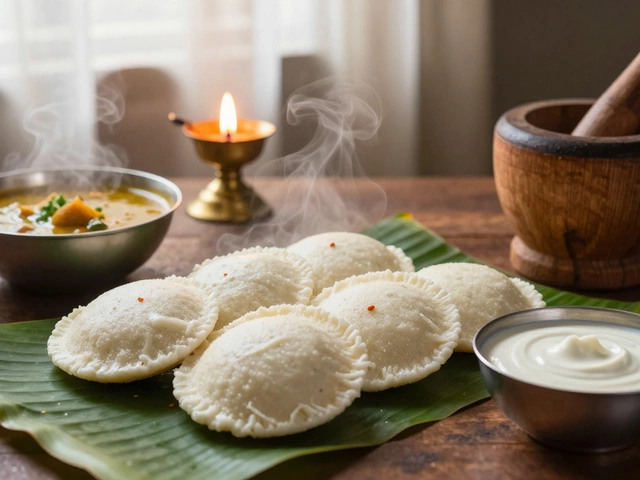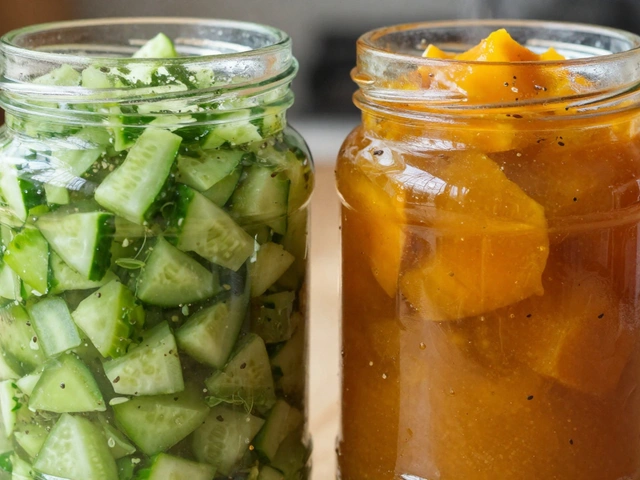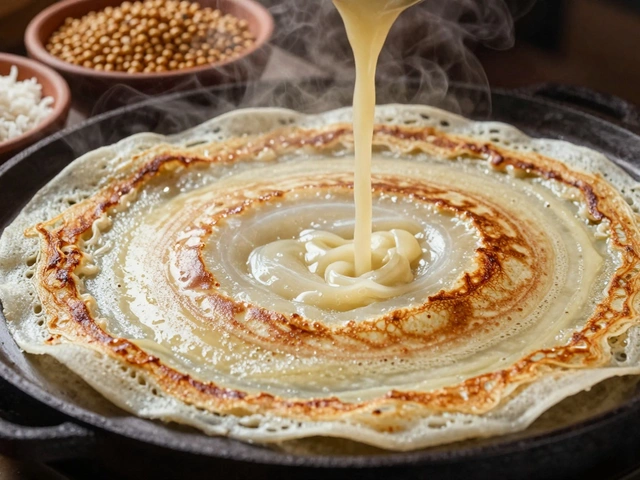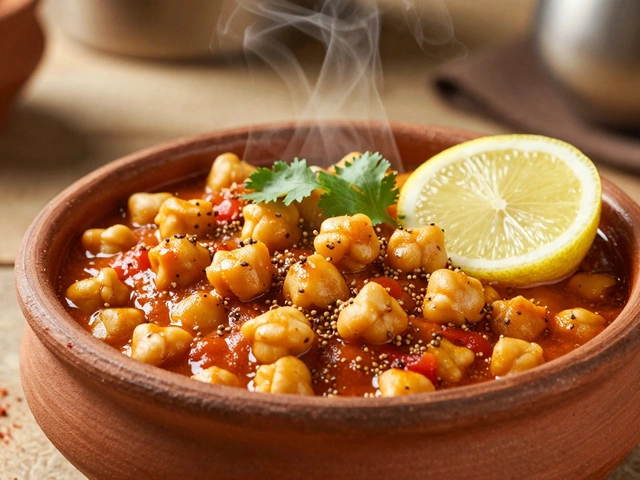Asafoetida Measurement Calculator
How Many Servings?
Asafoetida is extremely potent - start with less and adjust to taste
Pro Tip: Add hing at the start of tempering (tadka) in hot oil/ghee. The raw smell transforms into rich umami when cooked.
How to Use
1. Add 1/8 - 1/4 tsp to hot oil/ghee at the beginning of cooking
2. Let it sizzle for 5-10 seconds until aroma softens
3. Add onions and other ingredients to build flavor
Walk into any Indian kitchen and you’ll often notice a sharp, earthy aroma that seems to linger in the air. That nose‑tingling scent isn’t garlic or onion-it’s a special spice that Indian cooks swear by for its deep, umami‑rich flavor. If you’ve ever wondered what gives Indian dishes that unmistakable, slightly sulfurous perfume, the answer lies in asafoetida, commonly called hing.
What is asaftoid (hing)?
Asafoetida is a dried latex resin harvested from the roots of several Ferula species, mainly Ferula assa‑foetida. The resin is processed into tiny, brownish‑gray flakes or a fine powder that’s mixed with rice flour or other carriers to temper its potency.
In Hindi and many other Indian languages the spice goes by the name “hing.” Historically it was prized not just for cooking but also for its medicinal properties-ancient Ayurvedic texts mention hing as a digestive aid and a remedy for flatulence.
Why does asafoetida smell so strong?
The pungency comes from sulfur‑containing compounds such as ferulic acid, disulfides, and various sulfides. When you first open a jar, the scent can be reminiscent of rotten onions or even a hint of garlic gone bad. However, cooking transforms those harsh notes into a rich, savory depth that many liken to a blend of leeks, onions, and black garlic.
Heat is the magic catalyst. As hing meets oil or ghee, the sulfur compounds undergo a chemical change, mellowing out and releasing umami flavors that enhance the overall dish without overwhelming it.
How is asafoetida used in Indian cooking?
In most Indian recipes, hing is added at the very start of the tempering (tadka) process. A pinch is dropped into hot oil or ghee, and you’ll hear a gentle sizzle as the spice releases its aroma. From there, it infuses the oil, which then coats all subsequent ingredients-spices, vegetables, or meat.
Because asafoetida is so potent, a little truly goes a long way. A typical recipe calls for just 1/8 to 1/4 teaspoon for a serving size that feeds four to six people. Over‑adding can make the dish taste bitter, so it’s best to start small and adjust to taste.
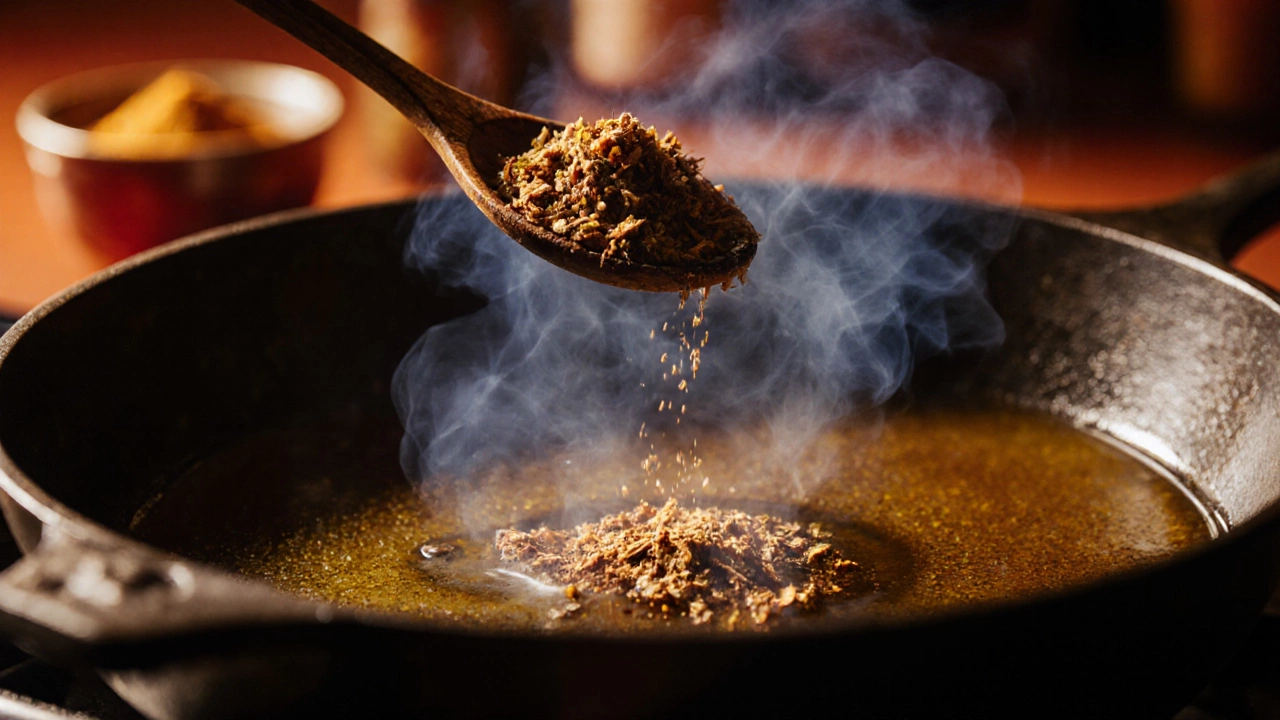
Asafoetida in chicken curry - a step‑by‑step example
- Gather ingredients: bone‑in chicken pieces, onions, tomatoes, ginger‑garlic paste, turmeric, cumin, coriander, garam masala, and a pinch of asafoetida.
- Heat 2 tablespoons of ghee in a heavy‑bottomed pan over medium heat.
- When the ghee shimmers, add the asafoetida. Let it sizzle for 5‑10 seconds until the smell softens.
- Add sliced onions and sauté until golden brown. This layered cooking builds the base flavor.
- Stir in ginger‑garlic paste, tomatoes, and the dry spices (turmeric, cumin, coriander). Cook until the oil separates from the masala.
- Introduce the chicken pieces, coat them in the spiced mixture, and sear for 3‑4 minutes.
- Add water or stock, bring to a boil, then reduce to a simmer. Cover and cook for 20‑25 minutes, or until the chicken is tender.
- Finish with garam masala and a drizzle of fresh cilantro. Serve with rice or naan.
The asafoetida enhances the curry’s depth, especially for those who prefer a milder onion‑on‑garlic flavor. It also helps cut down on the gassiness that beans and cruciferous veggies can cause, making the dish easier on the stomach.
Substitutes and storage tips
If you can’t find fresh hing, powdered asafoetida is widely available in Indian grocery stores and online. Look for a product that lists rice flour or wheat flour as a carrier-this prevents clumping. Store the spice in an airtight container, away from light and heat, to preserve its potency for up to a year.
When a substitute is necessary, a blend of garlic powder and a pinch of ground mustard can mimic hing’s sharpness, though the authentic umami will be missing. Some cooks also use a combination of onion powder and a few drops of truffle oil for a sophisticated twist.
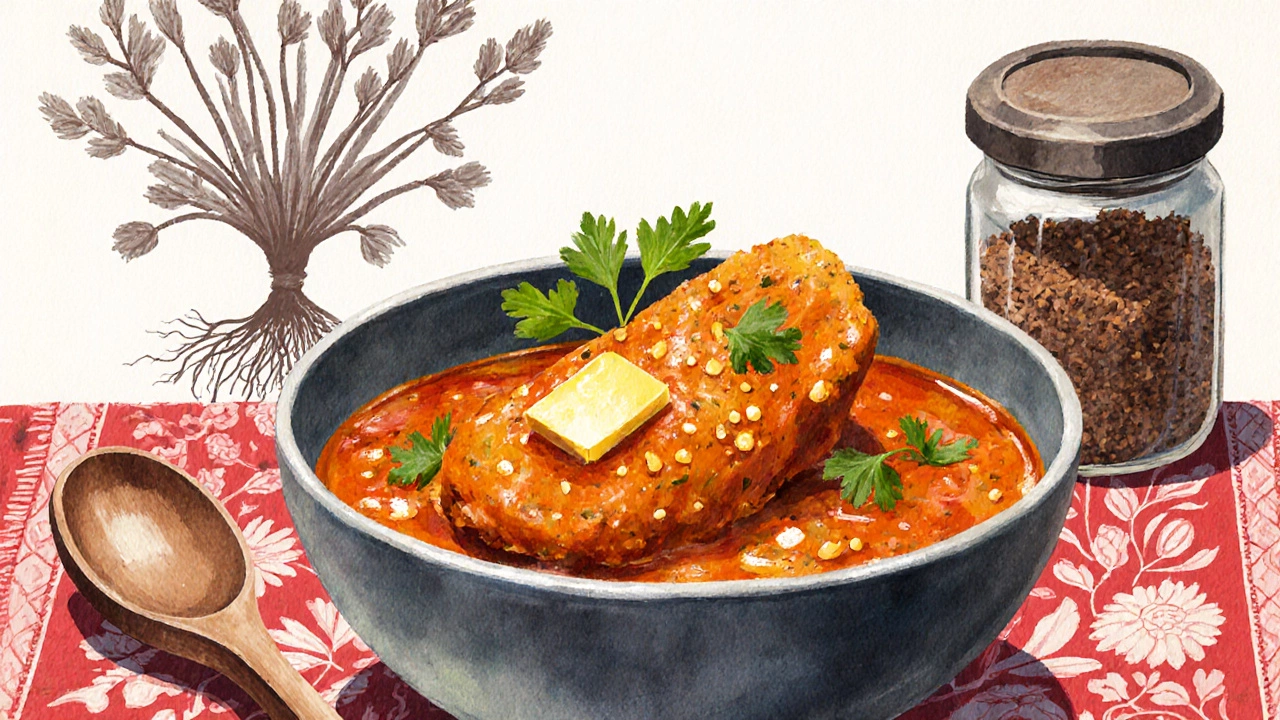
Common misconceptions about hing
- It’s only for vegetarian dishes. While hing is a staple in many lentil and vegetable recipes, it works beautifully with meat, seafood, and poultry.
- It’s a ‘bad’ smell. The raw aroma is strong, but cooking transforms it into a savory background note that many consider essential.
- All asafoetida is the same. Quality varies. The best hing comes from the Ferula assa‑foetida plant grown in Iran or Afghanistan. Lower‑grade varieties may be mixed with fillers that dilute the flavor.
Quick reference: Indian spices and their aromas
| Spice | Key Aroma | Typical Use |
|---|---|---|
| Asafoetida (hing) | Sulfurous, onion‑garlic | Temperings, lentils, curries |
| Cumin | Earthy, warm | Whole seeds, ground powder |
| Turmeric | Earthy, bitter | Color, anti‑inflammatory |
| Fenugreek | Maple‑like, slightly bitter | Leaves in chutneys, seeds in spice blends |
| Coriander | Citrusy, floral | Ground seed, fresh leaves (cilantro) |
Frequently Asked Questions
Why does asafoetida taste like garlic when cooked?
The sulfur compounds in hing degrade under heat, forming compounds similar to those found in garlic and onions, which is why the cooked flavor resembles those ingredients.
Can I use asafoetida in sweet dishes?
It’s uncommon, but a pinch can add an intriguing depth to certain Indian desserts like payasam or puddings that already contain nutty flavors.
Is asafoetida safe for pregnant women?
In typical culinary amounts it is considered safe. However, large medicinal doses should be avoided without a doctor’s guidance.
How long does asafoetida stay fresh?
Stored in a cool, dry place in an airtight container, it retains its potency for about 12 months. After that the aroma fades, though it’s still safe to use.
What’s the difference between powder and flakes?
Flakes are the raw resin, usually mixed with a carrier like rice flour. Powder is pre‑ground, often combined with wheat flour, making it easier to measure but less aromatic than fresh flakes.

